|
Vulnerability is the capacity to anticipate, cope with, resist and recover from the impact of natural disasters. Floods add to the distressed conditions of the poor and vulnerable people in Bihar. Floods have a different impact on households depending on differences in their livelihood choices. Therefore, in order to identify the variability in vulnerability of affected households, the livelihood vulnerability index (LVI) of Hahn, Riederer and Foster was modified according to the context of the study area. The LVI aims to identify sources and forms of vulnerability that are specific to the context in order to design context-specific resilience measures. However, vulnerability and resilience are not interdependent but discrete entities. The study was conducted in the seven blocks of Bhagalpur district in the state of Bihar. Naugachia was found to be the least vulnerable because of better access to basic amenities and livelihood strategies, whilst Kharik was found to be highly vulnerable in respect to other blocks because of high sensitivity and less adaptive strategy. The study also revealed that better access to resources does not necessarily mean that households are adopting resilience measures because of apathetic or indifferent attitudes.
Flood occurs when water runs over its natural confines and inundates a large area of land (Lefever, Bluemle & Waldkirch 1999). Bihar is one of the most severely flood-affected states in India, and it comprises 17 of India's flood-prone areas, with its 6.880 million ha of land, of which 1 million ha is perpetually waterlogged; 30 of its 38 districts perennially suffer from flooding (Government of India 2002). According to the Eleventh Finance Commission of Bihar, flood damage had increased by 54%, from Rs 9.49 million in 1989/1990 to Rs 5147.8 million in 1998/1999 (Tiwari 1999:32). Government's ‘red alert approach’, structural method (dams, flood levies, ocean wave barriers, earthquake-resistant construction and evacuation shelters) and ‘non-structural methods’ (building codes, land use planning laws and their enforcement, research and assessment, information resources and public awareness programmes) of ‘flood proofing’ (Government of India, 1992) have not been successful in effectively addressing the damage of recurrent floods because of its negligent attitude, lack of monitoring and corruption. For example, although government had 3465 km of embankment built, the lateral movement of rivers could not be checked, and flood water continued to flow (Tiwari 1999:35). Floods, besides destroying life and property of people, cause additional problems such as drainage congestion, water logging and riverbank erosion (Ghani 2001). The major factors that contribute to flooding in Bihar are (1) the cumulative runoff brought by rivers, (2) the continental monsoon with rainfall ranging from 1100 mm to 1250 mm and (3) the meandering nature of the rivers Ganga and Kosi, creating problems of alluvion (action of river adding to land area by deposition) and diluvion (washing away land) (O'Malley 1914). The construction of the Farraka Barrage is yet another factor that aggravates flooding in the state as it has caused siltation to the riverbed (Banerjee 1999).
There are several views and perspectives regarding the failure of government's initiatives to control the floods. Government's ‘wait it and see approach’ and officials’ indifferent are major shortcomings. As a result, by the time government moves into action, damage has already been done. In addition, vested interest groups, in collaboration with state officials and political leadership, siphon off relief materials for themselves rather than distributing them amongst flood victims (Saiyasombut & Siam Voices 2010). Thus, despite the government's flood control initiatives on paper, little has been done at the ground level, increasing the vulnerability of the population. As a result, rescue and rehabilitation of flood victims continues to be a serious challenge for the Bihar government.
|
Literature review – Measuring vulnerability and capacity
|
|
A few decades ago, vulnerability studies tended to have a ‘single stressor, single outcome’ approach, focusing on the physical impact of a disaster and its negative outcomes (Eakin & Luers 2006). The risk or hazard or biophysical approaches to vulnerability were concerned with the ‘likelihood of injury’ and damage caused as the core concern (Burton, Kates & White 1978). Subsequently, scholars posited that vulnerability is not confined to only the devastations caused by disaster to the physical environment, but also the impact on the social, economic, and political environments (Morrow & Phillips 1999; United Nations Office for Disaster Risk Reduction [UNISDR] 2004). Moreover, the activities of people in view of their varying age, gender and ethnicity characteristics are equally significant (Juntunen 2005). The pressure-and-release model assessed vulnerability in terms of a politico-ecological (Hewitt 1983) or politico-economic framework (Bohle et al. 1994). Later, the focus shifted to mitigation and control of disaster through coping measures (Birkmann 2006; Turner et al. 2003), and then to adaptation of resilience measures, which is considered the opposite side of vulnerability (Holling 1996; Timmerman 1981). Finally, a comprehensive view of vulnerability, taking into account exposure, susceptibility, socio-economic conditions and resilience measures of households, was considered more appropriate in understanding disaster impact (Birkmann 2006; Cardona 1999, 2001; Cardona & Barbat 2000; Cardona & Hurtado 2000; Carreno, Cardona & Barbat 2005). However, adaptation and resilience measures of livelihood may not be effective in coping with disaster without assessing and identifying vulnerability of people's existing socio-economic reality (Lavell 1999; UNISDR 2004) and without taking into account the effect of disaster in the time and space framework.
A disaster has far-reaching effects on both the tangible and intangible assets of households who live in its active zone. It disrupts people's livelihood structure, destroys their property, savings and employment infrastructure and, more importantly, dismantles their much-valued social network. Reconstruction of habitat and livelihood structure of the affected households is already government's foremost concern after floods, which is not only determined by flood intensity and its concomitant harms but, more importantly, by the ability of flood victims to recover from the disaster. In adverse conditions, the coping measures adapted by affected households are referred to as sustainable livelihood framework (Department for International Development [DFID] 1999).
However, it is recognised that households’ capacity and their access to resources differ considerably (Berke et al. 2007; Neumayer & Plumper 2007). Hence their recovery from disaster is not only dependent on its intensity and harm inflicted (external factors) (Carreno et al. 2005) but also by the differential capacity of households (internal factors) (Figure 1) (Bohle 2001; Van Dillen 2004). This is referred to as the ‘dualistic structure of vulnerability’ (Wisner 2002:17).
 |
FIGURE 1: Internal and external aspects of vulnerability. |
|
The Social Vulnerability Index (SoVI), first developed by Cutter, Boruff and Shirley (2003), uses a common set of broad indicators to explore differences in social vulnerability between places (countries, census tracts or census block groups). It illustrates the uneven capacity for preparedness and response and provides a useful benchmark for allocating resources to compensate for the different levels of vulnerability.
Households’ capacity to rekindle their livelihood does not follow one path, even at the same location, but differs according to differences in their capacity in spite of exposure being similar (Cardona & Barbat 2000). Likewise, there are significant differences between economically well-off households and poor households (Cutter et al. 2003), because of differential possession of assets and access to power (Lewis 1999) and access to information and knowledge (Alexander 2000). Households’ access to and control over resources (the entitlement approach) thus is very important (Enarson 2000; Sen 1980) in determining households’ capacity. Furthermore, the differences in households’ capacity to resist, absorb, and cope with disaster decide their susceptibility to disaster (Buckle, Marsh & Smale 2001). The households differ with regard to absorptive capacity to resist or buffer the distress caused by disaster and how they adjust and maintain their livelihood by their adaptive capacity (International Food Policy Research Institute [IFPRI] 2013; Walker et al. 2004). Therefore, households with differential capacity are comparatively at more risk and hence are more vulnerable to disaster as it worsens their livelihood conditions further (Hewitt 1998).
The other factors that determine the vulnerability of households are sensitivity (health, food, water), adaptive capacity (socio-demographic profile, livelihood strategies, social networks) and exposure (natural disaster) (Intergovernmental Panel on Climate Change [IPCC] 2001), which altogether constitute the essence of the livelihood vulnerability index (LVI) of Hahn, Riederer and Foster (2009). While sensitivity is the degree to which a system is affected by disaster, adaptive capacity is the system's ability to resist and absorb disaster, and exposure is the magnitude and duration to which the population is exposed to disaster (Ebi, Kovats & Menne 2006). In order to assess the impact of floods on households and the community (Cutter et al. 2003; Cutter et al. 2008; Cutter, Mitchell & Scott 2000), a composite vulnerability index and proxies to measure social vulnerability (Adger 1999) have been widely used in studies. In Bangladesh, Brouwer and colleagues (2007) applied income and its sources (Pelling 1997), distance from houses to rivers, depth of floodwater and economic losses to measure households’ vulnerability to floods. The United States Agency for International Development (USAID) model encompasses income, food access, assets, social capital or safety nets, nutrition and health, adaptive capacity and governance to minimise vulnerability and attain resilience.
The central focus of the LVI (Hahn et al. 2009) is to look into various aspects of vulnerability and differences in households’ efforts and adaptive capacity to maintain livelihood (Chambers & Conway 1992; Ellis 2000). These differences are found in accessibility to financial, human, social and physical capitals (Figure 2), which determine differences in households’ recovery from disaster, and which further lead to adaptation and livelihood resilience (Cassidy & Barnes 2012).
 |
FIGURE 2: Five types of household capital that contribute to household adaptive capacity and resilience. |
|
Although households have differential access to capitals, the impact of floods is similar on natural capital (e.g. floods that ruin agricultural land); physical capital (e.g. loss of housing, tools), financial capital (e.g. loss of savings), human capital (e.g. loss of life, health, employment) and social capital (e.g. damage to social networks) (ed. Carney 1998; DFID 1999, 2001). However, natural capital, which is equally important in development of sustainable livelihood and which is both renewable (such as land, water resources and forest) as well as non-renewable (fossils and mineral deposits) (Brown & Ulgiati 1999) does not find any mention in the LVI. In India, it is estimated that natural capital (land for agriculture and common property resources) accounts for 12% of households’ income (Organization for Economic Cooperation and Development [OCED] 2008). Natural capital plays an important role in the life of rural people and access or lack of access to it impacts on the vulnerability and resilience of such households. Therefore, it is necessary to add it to the LVI.
The study was conducted in the district of Bhagalpur, Bihar. It has an area of 2570 km2 and the rivers Ganga and Kosi traverse the district. The southern part of the district falls in the Badua-Koa sub-basin of the river Ganga, and the area north of the Ganga falls in the Baghmati-Kosi sub-basin. The district is principally drained by the river Ganga, which enters the district at Sultanganj. The northern boundary of the district is marked by the river Kosi (Ghugri), heavily laden with silt and sand. Geomorphologically, the district forms part of the Mid-Ganga foreland basin (Ministry of Water Resources 2009).
In the state of Bihar, the pressure of human population on land and common property resources is much higher than other states because of high population density (Thorpe et al. 2007, cited in Minhas & Samra 2003). The decadal population growth for the state (25.1%) is much higher than that for the country as a whole (17.6%) and the number of people per km2 (1102) is nearly three times that of the national average (382) (Government of Bihar 2012). This puts much pressure on farming, forestry and water resources and biological resources such as trees, pasture and biodiversity (ed. Carney 1998). Access to forest products, ownership, and possession of land are important determinants of households’ vulnerability (Vincent & Cull 2010) as a majority of the population depends on them for their livelihood. In many cases though, households own land but are not able to cultivate it because of floods (Table 1).
| TABLE 1: Composition of main workers in major Indian states, 2011. |
The absence of irrigation facilities, underdeveloped infrastructure, non-availability of agricultural inputs, and small and fragmented land holdings cause agriculture-dependent households to suffer even more poverty. The density of river and canals in the state is the lowest at 3.4 km per km geographical area and other water bodies (particularly tanks, ponds and reservoirs) comprise an estimated 1.7% of its geographical area (Thorpe et al. 2007, cited in Minhas & Samra 2003). Disaster adds further woes to households whose living conditions are already extremely precarious and demands priority redress. In the absence of adequate government support in respect of emerging challenges, households mobilise their own resources on the basis of their experience and knowledge to adapt livelihood strategies. They diversify the cropping pattern, reschedule the cropping and sowing times and store seed. However, the LVI does not take rescheduling of cropping and sowing into account. It is an important measure which helps the households to reduce vulnerability.
Financial capital (sources of income; savings, loans, assets, insurance) (Buckle 2006) is another significant determinant of the vulnerability of households, as most of the households are poor and suffer from extreme poverty conditions. In order to restore destroyed livelihood structure, a large amount of capital investment is required; however, it is not available to the poor. The absence of institutional credit forces households to use private moneylenders. Households initially start exploring loan possibilities in their network of friends and kin (Smit & Pilifosova 2001). Intra-household cooperation, support from family and friends (Adger et al. 2003), mobilisation of labour, credit, machinery and crop residues (Thorpe et al. 2007, cited in Minhas & Samra 2003) are the other sources households look to. Failing this, they fall back on moneylenders, who usually charge a very high interest rate, resulting in their increased indebtedness and vulnerability. The credit made available by government and non-governmental organisations, however small or big it may be (Ellis 2000), and the distributive structures of welfare, health care and relief (Wisner et al. 2004) play an important role in households’ recovery from flood. Becker (2007) argues that health plays a key role in shaping human capital. Furthermore, because of the remoteness of households, health issues are seriously neglected. Lack of prenatal and postnatal care, child delivery and immunisation facilities assume serious proportions after disaster. Contamination of water becomes a serious problem for people after floods, with serious implications for their health and hygiene, often resulting in exacerbation of conflicts (Dixon, Scura, Carpenter & Sherman 1994, cited in Hensel & Brochman 2007; Tandukar 2012). Households arrange for water on their own, adding further burden to their domestic expenditure. Therefore, availability of clean water is an important aspect in the LVI of people.
Human capital (education, skill and health) is a significant factor in determining households’ vulnerability. Low levels of education have depressing repercussions for economic growth in Bihar (Chanda 2011). Households with skills are more likely to gain employment and earn their wage by employing their skill than unskilled households (Cutter et al. 2003). Information about hazards, relief, financial support, and early warning to households (Buckel 2006) play a crucial role in households’ vulnerability. Therefore, in order to identify differences in households’ vulnerability, relevant local adaptation strategies for resilience ought to be included in the comprehensive LVI of an area.
|
Relationship between vulnerability and resilience
|
|
Vulnerability shows shock and stress absorbing capacities of households in restoring their normal life after disaster (Etkin et al. 2004; Walker et al. 2004). The capacity denotes skills or ability of the community to deal with disaster (Berke et al. 2007; Holling 2001) and to overcome and re-establish their livelihood after disaster by strategies and knowledge called ‘resilience functions’ or ‘operational resilience’ (Sapountzaki 2012).
According to Bruneau and colleagues (2003), the important features of resilience are robustness, rapidity, resourcefulness and redundancy. Robustness refers to the capacity to confront, resist and surmount the shock and distress without losing functionality. Rapidity refers to the pace at which households and the community rise over disruption and is capable of avoiding future loss. Resourcefulness indicates diversity of options and redundancy reflects the ability of households to mobilise available resources efficiently.
However, various approaches suggest that vulnerability and resilience exist side by side in a system (Turner et al. 2003). Firstly, in the livelihood household (LH) approach, although resilience is seen as the opposite of vulnerability (Figure 3) (Wilson 2012), they are not necessarily at the opposite ends of the spectrum. They are seen as ‘two separate occasionally interconnecting scales showing vulnerability from low to high and resilience low to high’ (Wilson 2012), which means that an increase in resilience would decrease vulnerability, whilst a decrease in resilience would increase vulnerability.
 |
FIGURE 3: Resilience and vulnerability as opposite ends of a spectrum. |
|
According to Turner (2010), vulnerability and resilience are important components of sustainability, with overlapping differences. Adger (2006) and Birkmann and Wisner (2006) purport that resilience is part of the adaptive capacity of households. According to Turner and colleagues (2003) and Gallopin (2006), both resilience and adaptive capacity are parts of vulnerability, whereas Smit and colleagues (1999) consider only adaptive capacity as a component of vulnerability, without any connection between vulnerability, resilience and adaptation (Cutter et al. 2008). United Nations Disaster Relief Organization (UNDRO) (1982) states that vulnerability and resilience are independent constructs. Chambers and Conway (1992) and Bohle and colleagues (1994) believe that exposure and vulnerability are within the purview of resilience. Many theorise that resilience is the outcome of vulnerability, or the flip-side of vulnerability, or reciprocal to vulnerability (Adger et al. 2005; Ainuddin & Routray 2012; Berke et al. 2007; Bruneau et al. 2003; Folke et al. 2002; Holling & Gunderson 2002; Manyena 2006; Paton & Johnston 2001; Sapountzaki 2012). Although resilience is considered an effect of vulnerability which may be opposite or reciprocal (Linley & Joseph 2004; Paton 2008), the absence of vulnerability does not mean resilience of households (Manyena 2006). Vulnerability cannot be folded into resilience or vice versa (Manyena 2009). In Herzberg's two-factor theory, absence of job dissatisfaction does not prove existence of job satisfaction, which means they are not opposite. Similarly, the absence of vulnerability does not prove the presence of resilience measures in households, as both are discrete entities (Manyena 2009).
Vulnerability is a perpetual construct that exists independent of disaster. Therefore, vulnerability and resilience are not interdependent. Rather, households, despite being vulnerable, may face disaster, live with risk, and survive (Cutter et al. 2000), on the one hand, whilst indifferent and apathetic attitude of households may restrain them from adapting resilience measures, on the other hand. This might be because of differences in available capacities (strengths and resources available to reduce risk) and applied capacities of households (ways through which households use available resources and abilities to face adverse consequences) for resilience (UNISDR 2004:42). McPherson and Saarinen (1977) found that because of limited success of past effort, households were impassive and apathetic to disaster and would not make efforts to recuperate (Manyena 2009). If households are confident in securing food, income, health and evacuation during floods and recovery after floods, and in securing their homes, and in their interest in learning and practicing new flood-based farming practices that are fully adapted to floods for improving household income during the flood season it would help them to survive in the flood-affected area (Nguyen, James & James 2013). Hence, it can be stated that presence or absence of vulnerability does not necessarily lead households to adapt to their livelihood or not. However, studies do not pay adequate attention to vulnerability and resilience as discrete entities.
Research objectives
The objectives of the study were:
-
to modify the LVI of Hahn and colleagues (2009) by identifying the components and subcomponents according to the context of the study and determine the vulnerability of the households
-
to explore the notion that vulnerability and resilience are discrete entities.
Research questions
Theory and calculation
Livelihood vulnerability index
The LVI developed by Hahn and colleagues (2009), Lohani (2007), Razafindrabe (2007), Eriksen and Kelly (2006), Selvaraju and colleagues (2006), Dahal (2006) and Agrawala and colleagues (2003) was used to assess the vulnerability of the seven blocks in the district of Bhagalpur, namely Bihpur, Ismailpur, Gopalpur, Rangra Chowk, Kharik, Narayanpur and Naugachia. However, the above studies applied LVI to measure climate change in order to highlight differences in households’ vulnerability. The LVI developed by Hahn and colleagues (2009) contains seven major components:
-
socio-demographic (SDP) profile (number of family members below 15 and over 65 years of age belonging to dependent level, female heads of the household, education and skills level of the household)
-
livelihood strategies (LS)
-
social network (SN)
-
health (H)
-
food (F)
-
water (W)
-
natural disaster (ND) and its impact.
The above LVI (Hahn et al. 2009) was revised by adding natural capital in view of the prevailing conditions of the sample households, obtained from the Bihar Statistical Handbook (Bihar Department of Planning and Development 2011), and then used for data collection. Household was the unit of analysis. Based on the sustainable livelihood framework, the components of sub-indices represented one of the five capitals. The natural capital (access to forest produces, fertility of land, and land under possession) was added as a major component along with the following subcomponents: acquisition of skill, change in sowing and cropping schedule, loan taking, primary irrigation source, availability of immunisation, government and private hospitals, and toilet facilities.
These components directly as well as indirectly represented households’ capacity and access to resources. The dimensions of vulnerability were assessed on a scale of 0 to 1 with equal weightage to all associated subcomponents, similar to Pandey and Jha (2012). Systematic combinations of indicators were used to assess the level of vulnerability. A number of proxy indicators were used to measure households’ access to various forms of capital. A set of unit-free indices of values between zero (lowest) and 1 (highest) was used to compare households’ access to various forms of capital. These indices were calculated using an equation adapted from the standardisation of all indicators comprising the human development index (HDI) developed by the United Nations Development Programme (UNDP) (1990). Similar to other studies (Hahn et al. 2009; Sullivan 2002), for the LVI construct, a balanced weight average with each subcomponent contributing equally to the overall index was assumed. The computation of each indicator value followed the process of standardisation adopted from the computation of the life expectancy index of the HDI (Hahn et al. 2009). This
computation is shown in Equation 1:
In the index, Sb is the original subcomponent of the block b and Smin and Smax are the minimum and maximum values for each subcomponent determined using data from the seven blocks of the district. The percent of households reporting in their community was set at a minimum of 0 and a maximum of 100. After each was standardised, the subcomponent was averaged using Equation 2 to calculate the value of each major component:
where Mb equals one of the major components for the block b (SDP, SN, H, F, W, natural capital [NC], ND), indexsbi represents the subcomponents, indexed by i, that makes up each major component, and n is the number of subcomponents in each component. Once values for each of the eight major components for a block were calculated, it was averaged using Equation 3 or 4 to obtain the LVI at block level:
which can also be shown as:
where LVIb is the livelihood vulnerability index for the block b, and the weightage of the eight major components, WMi, determined by the number of subcomponents that make up each major component, contribute equally to the overall LVI (Hahn et al. 2009; Sullivan 2002). In this study, the LVI is scaled from 0 (least vulnerable) to 0.5 (most vulnerable).
Livelihood vulnerability index-Intergovernmental Panel on Climate Change framework approach
The IPCC define livelihood vulnerability as a function of system exposure, sensitivity and adaptive capacity but it does not show the relationship between them (Shah et al. 2013). The LVI-IPCC approaches utilise household-level primary data to measure the subcomponents. Major components of the LVI-IPCC contributing to vulnerability are exposure (natural disasters, flood warning and injury experienced), adaptive capacity (socio-demographic profile, livelihood strategies, social networks, natural capital) and sensitivity (health, food, water). All three major components are combined in Equation 5 (Hahn et al. 2009):
where CFb is an IPCC-defined contributing factor (exposure, sensitivity or adaptive capacity) for the block b, Mbi is the major components for the block b, indexed by i, WMi is the weightage of each major component, and n is the number of major components in each contributing factor (Hahn et al. 2009). Once exposure, sensitivity and adaptive capacity were calculated, the three contributing factors were combined using Equation 6:
where LVI-IPCCdb is the LVI for the district d and block b expressed using the IPCC vulnerability framework, e is the calculated exposure score for the block (equivalent to the natural disaster), a is the calculated adaptive capacity score for the block (weightage average of socio-demographic, livelihood strategies, social networks, natural capital as major components), and s is the calculated sensitivity score for the block (weightage average of health, food and water major components) (Hahn et al. 2009). Components such as access to natural capital, and subcomponents related to health and skill are added according to relevance to the context of the study (Table 2). The LVI-IPCC is scaled from −1 (least vulnerable) to 1 (most vulnerable).
| TABLE 2: Major components and subcomponents comprising the livelihood vulnerability index developed for the district. |
Livelihood vulnerability index-Intergovernmental Panel on Climate Change analysis results
To assess the vulnerability of households, data were collected from seven blocks on the basis on eight major components of LVI, namely SDP, SN, H, F, W, NC and ND (Hahn et al. 2009) (Table 3). The assessment of the individual major component along with respective subcomponents of the LVI value indicates the vulnerability of different blocks The scale of the diagram ranges from 0 (less vulnerable) at the centre of the web to 0.5 (more vulnerable) at the edge, increasing in increments of 0.1. The LVI-IPCC value shows the difference in households’ adaptive strategies, sensitivity and experience level. The results show varied responses in each selected district block.
| TABLE 3: Livelihood vulnerability index for district blocks. |
The study does not show much difference in the socio-demographic index of the seven blocks, possibly because of their similar physical settings. The vulnerability of socio-demographic profile was highest in Kharik (0.33) and lowest in Naugachia (0.24). The family dependency level was compared with education attained by heads of households; the blocks in which the head of the household had a higher education level showed a lower level of dependency. Naugachia (0.21) and Narayanpur (0.28), where the majority of the heads of households were educated, had the lowest dependency levels (Naugachia 0.34 and Naraynpur 0.32) in comparison to other blocks. This shows that education is inversely proportional to dependency level of households in the area. Thus, decrease in dependency level of households helps to increase the education level of households. Furthermore, in blocks where the level of education was low, formal and informal skill levels were also low: Bihpur (0.39), Ismailpur (0.38) and Gopalpur (0.34) in comparison to Naugachia (0.28), Rangra Chowk (0.28) and Narayanpur (0.31), where a high number of households had formally and informally acquired skills. The number of female-headed households was lowest in Naraynpur (0.16), Ismailpur (0.16) and Gopalpur (0.17). This occurs because of seasonal outmigration of male household members to other areas for wage earning.
The livelihood strategies of the households were diverse because of their knowledge and experience of disaster exposure. These strategies include growing crops, raising animals, collecting natural resources and family member or members migrating to other areas. In Naugachia, the majority of the households reported that members of their families move to different communities for work (0.41), have diverse income sources (0.43), have an inclination toward different livelihood activities (0.44) and change their sowing and cropping schedule (0.41). Because of Naugachia's proximity to urban areas it is comparatively more developed and has better options of livelihood activities. The livelihood strategies were lowest in Bihpur (0.29).
Because of better livelihood conditions in Naugachia, fewer households (0.19) solely depend on agriculture and a high percentage owns land (0.32). The dependency on agriculture (0.35) and fertility of land (0.41) was highest in Gopalpur. Land ownership was highest in Narayanpur (0.40).
Borrowing and lending money indicate the financial assistance households receive in cash and kind from their social network (Hahn et al. 2009). Households that borrow money more than they lend are more vulnerable (Hahn et al. 2009). In Narayanpur, Ismailpur and Kharik, borrowing money was higher than lending money, and thus these blocks were more vulnerable than others were. The network and trust between households helps them to recover from flood effects (Thomas et al. 2005). A large number of households reported to have a strong social network in Narayanpur (0.44). Most of the households from all the blocks did not approach government for work; in Narayanpur and Kharik, however, the number of households approaching the government for job was highest.
Families in Naugachia (0.29) reported less difficulty in acquiring adequate food and seed (0.28) because of sufficient food grain production (0.34); in Rangra Chowk (0.44), however, households struggled to find food. In Naugachia modern irrigation facilities (0.22) such as electric systems, diesel tube wells and pump sets were in practice. In some cases, power tillers were also used. In other regions, traditional means of irrigation, such as the ahar-pyne system, were still in practice. In addition, Naugachia also had better access to water facilities such as boreholes, hand pumps and deep tube wells, resulting in less water conflict (0.17); in Narayanpur (0.43) and Bihpur (0.36), more water conflicts were reported. In Ismailpur, a large number of households were found to collect water from natural water resources (0.46). Because of high conflict and less availability of water, the largest number of households storing water was found in Narayanpur (0.40) and Rangra Chowk (0.37).
In Naugachia (0.26), the least households reported ill health as a result of better livelihood options and government and private health facilities. On the other hand, the block with the most households that reported ill health was Gopalpur (0.43), because of lack of health facilities. In Rangra Chowk (0.37), a large number of households did not treatment in government and private hospitals (0.40) and did not have access to proper facilities for child delivery and immunisation (0.40). In such households, even toilet facilities were unavailable (0.38) in their houses. Gopalpur (0.52) and Ismailpur (0.43) reported serious problems with of toilet facilities. The highest vulnerability to natural disasters such as floods, drought and cyclones was reported in Narayanpur and Gopalpur, and the lowest in Rangra Chowk and Ismailpur (Government of Bihar 2011). The highest number of households to report death or injury was reported in Gopalpur. The occurrence of natural disasters was highest in Naugachia and Kharik, where the majority of the households did not receive warning of disaster. The difference in vulnerability of different blocks is depicted in Figure 5.
 |
FIGURE 5: Vulnerability spider diagram of the major components of the livelihood vulnerability index for district blocks. (a) Narayanpur, (b) Bihpur, (c) Rangra Chowk, (d) Gopalpur, (e) Ismailpur, (f) Naugachia, (g) Kharik and (h) total. |
|
The first research question is answered through LVI-IPCC analysis, which shows the vulnerability (Table 4) of Gopalpur (0.012), Bihpur (0.06), Ismailpur (0.06), Rangra Chowk (0.08), Kharik (0.08), Narayanpur (0.07) and Naugachia (-0.07).
| TABLE 4: Intergovernmental Panel on Climate Change livelihood vulnerability index (livelihood vulnerability index-Intergovernmental Panel on Climate Change) for district blocks. |
Figure 6 shows a vulnerability triangle, which plots the scores the contributing factors exposure (natural disaster, warning, death or injury caused by it), adaptive capacity (livelihood strategies) and sensitivity (based on socio-demographic, health, food, water and social network).
 |
FIGURE 6: Vulnerability triangle diagram of the contributing factors of the Intergovernmental Panel on Climate Change livelihood vulnerability index (livelihood vulnerability index-Intergovernmental Panel on Climate Change) for district blocks. |
|
The results for the major components of each block are presented both separately and collectively in the spider diagram. The scale ranges from 0 (less vulnerable) at the centre of the web to 0.05 (more vulnerable) at the edge, increasing in increments of 0.1. The diagram shows that households from all the blocks are more vulnerable in terms of water resources, health problems, dependency ratio and education level. The sensitivity score is lowest in Naugachia and highest in Gopalpur. Naugachia's exposure to disaster is comparatively higher than that of other blocks.
According to the LVI-IPCC, the most vulnerable blocks are Kharik, Bihpur and Ismailpur (0.06) because of more sensitivity and less adaptive capacity, whilst Naugachia (-0.07) is least vulnerable. The overall LVI-IPCC scores indicate that households in Naugachia are comparatively less vulnerable than other blocks because of better adaptive strategy (0.29) and less sensitivity (0.27).
The modification of Hahn and colleagues’ LVI (2009) by adding natural capital and some other subcomponents is a significant contribution of the study. The findings of the study show that households in Naugachia have better access to basic amenities like food, water and health with diverse livelihood options and the shadow effect of the urban area. Naugachia is found to be the least vulnerable block despite being severely exposed to flood in comparison to other blocks. The other blocks lack basic facilities and are thus more vulnerable because they have less capability to recover.
However, in all the blocks households still depend on natural capital for maintaining their livelihood. It means that the livelihood of households living below the poverty line is controlled and regulated by the whims of nature. Infertility and dispossession of land as well as dependency on primary irrigation facilities have made the situation even worse. Unskilled labourers are left with no opportunities to earn, and hence, migrate to other areas. The outmigration of people in order to earn a wage helps them to sustain their livelihood. Social ties facilitate the process of migration (Deshingkar et al. 2006) but for the poorest it is difficult to migrate without any network or support (De Haan 2002). Social capital plays an important role in migration and features in all blocks, which helps in recovery of households. However, in precarious situations households adapt their livelihood strategies in order to minimise the impact of the disaster. The study has attempted to determine the vulnerability of the area prone to disaster caused by cyclones, drought and floods. The assessment of vulnerability can help to reduce the susceptibility of the area with regard to recovery from external shock and future losses. A comprehensive LVI assessment of all areas, thus, can be prepared to identify and access vulnerability of all households, and accordingly, provision for basic amenities and access to resources to strengthen the capacity of households to overcome challenges posed by disasters. Furthermore, in order to broaden and diversify livelihood bases, multiple options of livelihood and income earning may be created to suit people's specific requirements.
The findings of the study are pertinent to government and non-governmental organisations who are actively involved in flood control programmes. By using LVI analysis, government can identify the areas that are most vulnerable, and thus, can provide basic amenities and access to resources in accordance with their needs as a mitigation strategy, to ensure improved capacity of households in responding to flooding. Furthermore, by addressing the basic needs of households and by making provision for better health and sanitation facilities, government can decrease their susceptibility and improve their pace of recovery. Government can further focus on diversification of livelihoods to ensure households’ accessibility to multiple options of livelihood and income during the period the area is inundated, which can be more than 3 months.
To determine the interconnection between vulnerability and resilience, the LVI was used with livelihood strategy components removed from it. To answer the second research question, the ordinary least square (OLS) regression method was used. The scale adapted from literature was used to measure livelihood resilience and in-depth interviews during the survey were used to determine which resilience measures households adopt in flood disaster. The validity of the livelihood resilience scale was tested by exploratory factor analysis. The result of the simple linear regression shows that the vulnerability of livelihood did not influence livelihood resilience, F (467, 2) = p > 0.05, as it was not significant and supported. The R2 value explained by the livelihood vulnerability on the resilience of livelihood is 0.048. The study supports the approach that absence of vulnerability in a social system does not mean attainment of sustainable livelihood. Even though households may have good access to all forms of capital, they may not be resilient in case of a flood. This means resilience is a process, which develops through learning and experience. However, absence of vulnerability does prove the existence of resilience. There may be vulnerable households within resilient communities, and vulnerable communities may have resilient households. The attitude of a household makes the difference between households’ applied and available capacity to cope with disaster. Thus, absence of vulnerability does not necessarily mean that households are vulnerable to flood. Although vulnerability and resilience are interconnected, lack of vulnerability is not found to determine resilience.
The findings of the study based on the LVI developed by Hahn and colleagues (2009) – with additional components of natural capital and other subcomponents (acquisition of skill, change in sowing and cropping schedules, loan taking, use of primary irrigation source, availability of immunisation and government and private hospitals, and toilet facilities) – reveal that the most vulnerable blocks in Bihar are Kharik, Bihpur and Ismailpur and the least vulnerable is Naugachia.
The vulnerability of households differs because of differences in the households’ sensitivity, adaptive capacity and exposure to natural disaster, which is further reflected in their disaster recovery strategies. The study also identifies different blocks’ vulnerability level, which may be helpful in formulating and executing different programmes to reduce the sensitivity of households in those blocks, which in turn may help them to be more efficient in overcoming the shock caused by disaster and re-establishing their livelihood. Knowledge and understanding of households’ vulnerability may provide government and other relevant agencies with critical information for proper distribution of relief materials. Households’ local adaptation strategies for resilience help them in implementing non-structural mitigation measures, which also benefit overall development through capacity building. Furthermore, households with low levels of human, financial, social and physical capital are found to have less capacity to meet the challenges of a disaster. However, a low level of household vulnerability does not mean that they are resilient to flood damages. A fatalistic and blasé attitude might restrain households from adapting resilience measures. Therefore, vulnerability and resilience are discrete entities.
There are some limitations to the study. Firstly, the LVI is used at household level but the differences measured at block level. Secondly, the local adaptation strategies can be explored further with the help of other methods. Future studies can use focused group discussion to explore different resilience, considering the difference in LVI at district or state level.
Competing interests
The authors declare that they have no financial or personal relationship(s) that may have inappropriately influenced them in writing this article.
Authors’ contributions
M. (Indian Institute of Technology Kharagpur) was responsible for the genesis of the idea and the tabulation and analysis of the article. H.R.T. (Indian Institute of Technology Kharagpur) was responsible for designing the structure of the article. Both H.R.T. and P.K.B. (Indian Institute of Technology Kharagpur) were responsible for reformulating the concept of the livelihood vulnerability index.
Adger, W.N., 1999, ‘Social vulnerability to climate change and extremes in coastal Vietnam’, World Development 27, 249–269. http://dx.doi.org/10.1016/S0305-750X(98)00136-3
Adger, W.N, 2006, ‘Vulnerability’, Global Environmental Change 16, 268–281. http://dx.doi.org/10.1016/j.gloenvcha.2006.02.006
Adger, W.N., Hughes, T.P., Folke, C., Carpenter, S.R. & Rockstrom, J., 2005, ‘Social-ecological resilience to coastal disasters’, Science 309, 1036–1039. http://dx.doi.org/10.1126/science.1112122
Adger, W.N., Huq, S., Brown, K., Conway, D. & Hulme, M., 2003, ‘Adaptation to climate change in the developing world’, Progress in Development Studies 3, 179–195. http://dx.doi.org/10.1191/1464993403ps060oa
Agrawala, S., Ota, T., Ahmed, A.U., Smith, J. & Van Aalst, M., 2003, Development and climate change in Bangladesh: Focus on coastal flooding and the Sunderbans, Organisation for Economic Co-operation and Development (OECD), Paris.
Ainuddin, S. & Routray, J.K., 2012, ‘Earthquake hazards and community resilience in Baluchistan’, Natural Hazards 63, 909–937. http://dx.doi.org/10.1007/s11069-012-0201-x
Alexander, D., 2000, Confronting catastrophe, Oxford University Press, New York.
Banerjee, M., 1999, A report on the impact of Farakka Barrage on the human fabric, South Asian Network on Dams, Rivers and People, New Delhi, viewed 22 February 2011, from http://sandrp.in/dams/impct_frka_wcd.pdf
Becker, S., 2007, ‘Global perspectives on children's unpaid care giving in the family: Research and policy on “young carers” in the UK, Australia, the USA and Sub-Saharan Africa’, Global Social Policy 7(1), 23–50. http://dx.doi.org/10.1177/1468018107073892
Berke, P., Chuenpagdee, R., Juntarashote, K. & Chang, S., 2007, ‘Human ecological dimensions of disaster resiliency in Thailand: Social capital and aid delivery’, Journal of Environmental Planning and Management 51(2), 303–317. http://dx.doi.org/10.1080/09640560701864993
Birkmann, J., 2006, Measuring vulnerability to natural hazards – Towards disaster resilient societies, United Nations University Press, Tokyo.
Birkmann, J. & Wisner, B., 2006, ‘Measuring the un-measurable: The challenge of vulnerability’, SOURCE 5, United Nations University, Institute for Environment and Human Security, Bonn, viewed 14 July 2010, from http://www.ehs.unu.edu/publication/view/38
Bihar Department of Planning and Development, 2011, Bihar Statistical Handbook, viewed 13 August 2012, from http://www.dse.bih.nic.in/New-Publications/BSHB-2010.pdf
Bohle, H.G., 2001, ‘Vulnerability and criticality: Perspectives from social geography’, IHDP Update 2, 1–7, International Human Dimensions Programme on Global Environmental Change.
Bohle, H.G., Downing, G., Thomas, E. & Watts, M.J., 1994, ‘Climate change and social vulnerability: Toward a sociology and geography of food insecurity’, Global Environmental Change 4, 37–48. http://dx.doi.org/10.1016/0959-3780(94)90020-5
Brouwer, R., Akter, S., Brander, L. & Haque, E., 2007, ‘Socio-economic vulnerability and adaptation to environmental risk: A case study of climate change and flooding in Bangladesh’, Journal of Risk Analysis 27(2), 313. http://dx.doi.org/10.1111/j.1539-6924.2007.00884.x
Brown, M.T. & Ulgiati, S., 1999, ‘Energy evaluation of the biosphere and natural capital’, Ambio 28, 486–493.
Bruneau, M., Chang, S., Eguchi, R., Lee, G., O'Rourke, T., Reinhorn, A. et al., 2003, ‘A framework to quantitatively assess and enhance the seismic resilience of communities’, EERI Spectra Journal 19(4), 733–752. http://dx.doi.org/10.1193/1.1623497
Buckle, P., 2006, ‘Assessing social resilience’, in D. Paton & D. Johnston (eds.), Disaster resilience: An integrated approach, pp. 88–103, Charles C. Thomas, Springfield.
Buckle, P., Marsh, G. & Smale, S., 2001, Assessing resilience & vulnerability: Principles, strategies & actions, guidelines prepared for Emergency Management Australia.
Burton, I., Kates, R.W. & White, G.F., 1978, The environment as hazard, Oxford University Press, New York.
Cardona, O.D., 1999, ‘Environmental management and disaster prevention: Two related topics – A holistic risk assessment and management approach’, in J. Ingleton (ed.), Natural disaster management, pp. 151–153, Tudor Rose, London.
Cardona, O.D., 2001, ‘Estimación Holística del Riesgo Sísmico utilizando Sistemas Dinámicos Complejos’ [Holistic evaluation of seismic risk using a complex dynamic system], PhD dissertation, Department of Terrain Engineering, Technical University of Catalonia, Barcelona.
Cardona, O.D. & Barbat, A.H., 2000, El Riesgo Sísmico y su Prevención, Cuaderno Técnico 5, Calidad Siderúrgica, Madrid.
Cardona, O.D. & Hurtado, J.E., 2000, ‘Holistic seismic risk estimation of a metropolitan center’, Proceedings of the 12th World Conference of Earthquake Engineering, New Zealand Society for Earthquake Engineering, Auckland, January 30 – February 04, 2000, paper 2643.
Carney, D. (ed.), 1998, Sustainable rural livelihoods: What contribution can we make?, Russell Press, Nottingham.
Carreño, M.L., Cardona, O.D. & Barbat, A.H., 2005, ‘Sistema de Indicadores para la Evaluación de Riesgos’ [Indicator system for risk evaluation], Monograph of Earthquake Engineering IS-52, International Centre for Numerical Method in Engineering (CIMNE), Barcelona.
Cassidy, L. & Barnes, G., 2012, ‘Understanding household connectivity and resilience in marginal rural communities through social network analysis in the village of Habu, Botswana’, Ecology and Society 17, 4–11. http://dx.doi.org/10.5751/ES-04963-170411
Chambers, R., 1989, ‘Editorial introduction: Vulnerability, coping and policy’, Institute of Development Studies Bulletin 20(2), 1–7. http://dx.doi.org/10.1111/j.1759-5436.1989.mp20002001.x
Chambers, R. & Conway, G.R., 1992, Sustainable rural livelihoods: Practical concepts for the 21st century, discussion paper 296, Institute of Development Studies, Brighton.
Chanda, A., 2011, Accounting for Bihar's productivity relative to India's: What can we learn from recent developments in growth theory?, IGC Working Paper 11/0759, viewed 05 April 2010, from http://www.theigc.org/sites/default/files/11_0579_chanda_bihar_final.pdf
Corbett, J., 1988, ‘Famine and household coping strategies’, World Development 16(9), 1099–1112. http://dx.doi.org/10.1016/0305-750X(88)90112-X
Cutter, S.L., Barnes, L., Berry, M., Burton, C.G., Evans, E., Tate, E.C. et al., 2008, ‘A place-based model for understanding community resilience to natural disasters’, Global Environmental Change 18, 598–606. http://dx.doi.org/10.1016/j.gloenvcha.2008.07.013
Cutter, S.L., Boruff, B.J. & Shirley, W.L., 2003, ‘Social vulnerability to environmental hazards’, Social Science Quarterly 84(1), 242–261. http://dx.doi.org/10.1111/1540-6237.8402002
Cutter, S.L., Mitchell, J.T. & Scott, M.S., 2000, ‘Revealing the vulnerability of people and places: A case study of Georgetown County, South Carolina’, Annals of the Association of American Geographers 90(4), 713–737. http://dx.doi.org/10.1111/0004-5608.00219
De Haan, A., 2002, ‘Migration and livelihoods in historical perspective: A case study of Bihar, India’, Journal of Development Studies 38(5), 115–142. http://dx.doi.org/10.1080/00220380412331322531
Dahal, N., 2006, ‘Implications of climate change on biodiversity in Nepal: Some observations and opportunities’, paper presented at the 23rd Warden Seminar, Pokhara, November, viewed 08 December 2012, from http://www.mtnforum.org/oldocs/626.pdf
Department for International Development (DFID), 1999, Sustainable livelihoods guidance sheets, nrs 1–8, DFID, London.
Department for International Development (DFID), 2001, ‘Changing thinking: Sustainable livelihoods’, in DFID, Poverty elimination: The role of economic and social research, Economic and Social Research Unit (ESCOR), DFID, London.
Deshingkar, P., Kumar, S., Chobey, H.K. & Kumar, D., 2006, The role of migration and remittances in promoting livelihoods in Bihar, Overseas Development Institute, London.
Demographic and Health Surveys (DHS), 2006, Measure DHS: Model questionnaire with commentary, Basic Documentation 2, DHS, Calverton.
Dixon, J.A., Scura, L.F., Carpenter, R.A. & Sherman, P.B., 1994, Economic analysis of environmental impacts, Earthscan, London.
Eakin, H. & Luers, M., 2006, ‘Assessing the vulnerability of socio-environmental systems’, Annual Review of Environment and Resources 3, 365–394. http://dx.doi.org/10.1146/annurev.energy.30.050504.144352
Ebi, K., Kovats, R.S. & Menne, B., 2006, ‘An approach for assessing human health vulnerability and public health interventions to adapt to climate change’, Environmental Health Perspectives 114, 1930–1934.
Ellis, F., 2000, Rural livelihoods and diversity in developing countries, Oxford University Press, Oxford.
Enarson, E., 2000, Gender and natural disasters, Recovery and Reconstruction Department, International Labour Organization, Geneva.
Eriksen, S. & Kelly, P.M., 2006, ‘Developing credible vulnerability indicators for policy assessment’, Mitigation and Adaptation Strategies for Global Change 12(4), 495–524. http://dx.doi.org/10.1007/s11027-006-3460-6
Etkin, D., Haque, E., Bellisario, L. & Burton, I., 2004, An assessment of natural hazards and disasters in Canada, The Canadian Natural Hazards Assessment Project, Public Safety and Emergency Preparedness Canada and Environment Canada, Ottawa.
Folke, C., Carpenter, S., Elmqvist, T., Gunderson, L., Holling, C., Walker, B. et al., 2002, Resilience and sustainable development: Building adaptive capacity in a world of transformations, scientific background paper on resilience for the process of the World Summit on Sustainable Development, Environmental Advisory Council to the Swedish Government, Stockholm.
Gallopín, G.C., 2006, ‘Linkages between vulnerability, resilience and adaptive capacity’, Global Environmental Change 16(3), 293–303. http://dx.doi.org/10.1016/j.gloenvcha.2006.02.004
Ghani, M.U., 2001, Participatory strategy for flood mitigation in east and northeast India: Case study of the Ganges–Brahmaputra–Meghna basin, viewed 06 March 2011, from http://ssvk.org/koshi/analytical_articles/participatory_strategy_for_flood_mitigation.pdf
Government of Bihar, 2011, Final flood report, viewed n.d., from http://www.disastermgmt.bih.nic.in/Statitics/from%20ix%20final%202011.pdf
Government of Bihar, 2012, Economic survey 2011–12, viewed 07 September 2012, from http://finance.bih.nic.in/Documents/Reports/Economic-Survey-2012-EN.pdf
Government of Bihar, 2014, Economic survey 2013–14, viewed 20 March 2013, from http://finance.bih.nic.in/Documents/Reports/Economic-Survey-2014-EN.pdf
Government of India, 1992, Eighth five-year plan 1992–1997, viewed 04 September 2011, from http://planningcommission.nic.in/plans/planrel/fiveyr/8th/default.htm
Government of India, 2002, Tenth five-year plan 2002–2007, viewed 08 June 2011, from http://planningcommission.nic.in/plans/planrel/fiveyr/10th/default.htm
Hahn, M.B., Riederer, A.M. & Foster, S.O., 2009, ‘The livelihood vulnerability index: A pragmatic approach to assessing risks from climate variability and change – A case study in Mozambique’, Global Environmental Change 19(1), 74–88. http://dx.doi.org/10.1016/j.gloenvcha.2008.11.002
Hensel, P.R. & Brochmann, M., 2007, ‘Armed conflict over international rivers: The onset and militarization of river claims’, paper presented at the 48th International Studies Association Annual Convention, Hilton, Chicago, 02 March.
Hewitt, K., 1983, Interpretations of calamity, Allen & Unwin, Winchester.
Hewitt, K., 1998, ‘Excluded perspectives in the social construction of disaster’, in E.L. Quarantelli (ed.), What is a disaster? Perspectives on the question, pp. 75–91, Routledge.
Holling, C.S., 1996, ‘Engineering resilience versus ecological resilience’, in P.C. Schulze (ed.), Engineering within ecological constraints, pp. 31–44, National Academy Press, Washington, D.C.
Holling, C.S., 2001, ‘Understanding the complexity of economic, ecological social systems’, Ecosystems 4(5), 390–405. http://dx.doi.org/10.1007/s10021-001-0101-5
Holling, C.S. & Gunderson, L.H., 2002, ‘Resilience and adaptive cycles’, in L.H. Gunderson & C.S. Holling (eds.), Panarchy: Understanding transformations in human and natural systems, pp. 25–62, Island Press, Washington, D.C.
International Food Policy Research Institute (IFPRI), 2013, Countries in West Africa must add climate change adaptation to food security investments, viewed 10 November 2011, from http://www.ifpri.org/pressrelease/countries-west-africa-must-add-climate-change-adaptation-food-security-investments
International Institute for Population Sciences (IIPS) & ORC Macro, 2007, National Family Health Survey (NFHS) III, 2005-2006, India, Vol. 1, IIPS, Mumbai.
Intergovernmental Panel on Climate Change (IPCC), 2001, Climate change 2001: Impacts, adaptation, and vulnerability, Cambridge University Press, Cambridge.
Juntunen, L., 2005, ‘Addressing social vulnerability to hazards’, Disaster Safety Review 4(2), 3–10.
Kishore, A., 2004, ‘Understanding agrarian impasse in Bihar’, Economic and Political Weekly 39(31), 3484–3492.
Lavell, A., 1999, ‘Enviormental degradation, risk and urban disasters.issues and concepts: Towards the definition of a research agenda’, in M.A. Fernandez (ed.), Cities at risk: Enviormental degradation urban risks and Disasters in latin America, pp. 19–58, La RED, US AID, QUITO, Ecuador.
Lefever, J.A., Bluemle, J.P. & Waldkirch, R.P., 1999, ‘Flooding in the Grand Forks – East Grand Forks North Dakota and Minnesota area’, North Dakota Geological Survey Educational Series 25.
Lees, S. & Bates, D., 1990, ‘The ecology of cumulative science’, in E.F. Morgan (ed.), The ecosystem approach to anthroplogy from concept and practice, pp. 247–277, University of Michigan Press, Ann Arbor.
Lewis, K.K., 1999, ‘Trying to explain home bias in equities and consumption’, Journal of Economic Literature 37(2), 571–608. http://dx.doi.org/10.1257/jel.37.2.571
Linley, P.A. & Joseph, S., 2004, ‘Positive change following trauma and adversity: A review’, Journal of Traumatic Stress 17, 11–21. http://dx.doi.org/10.1023/B:JOTS.0000014671.27856.7e
Lohani, S.N., 2007, ‘Climate change in Nepal: Shall we wait until bitter consequences?’, Agriculture and Environment 8, 38–45.
Madhav, G., 2010, ‘Intensive meditation for refractory pain and symptoms’, Journal of Alternative and Complementery Medicine 16(6), 627–631. http://dx.doi.org/10.1089/acm.2009.0372
Manyena, S.B., 2006, ‘The concept of resilience revisited’, Disasters 30(4), 433–450. http://dx.doi.org/10.1111/j.0361-3666.2006.00331.x
Manyena, S.B., 2009, ‘Disaster resilience in development and humanitarian intervention’, PhD. thesis, School of Applied Science, Northumbria University, Newcastle.
McPherson, H.J. & Saarinen, T.F., 1977, ‘Flood plain dwellers’ perception of the flood hazard in Tuscon, Arizona’, Annals of Regional Science 11(2), 25–40. http://dx.doi.org/10.1007/BF01287852
Minhas, P.S. & Samra, J.S., 2003, ‘Quality assessment of water resources in the Indo-Gangetic Basin part of India’, Technical Bulletin No. 1/2003, Central Soil Salinity Research Institute, Karnal, India.
Ministry of Water Resources, Government of India, 2009, Ground water information booklet: Bhagalpur district, Bihar state, Ministry of Water Resources, New Delhi.
Morrow, B.H. & Phillips, B., 1999, ‘What's gender got to do with it?’, International Journal of Mass Emergencies and Disasters 17(1), 5–11.
Neumayer, E. & Plumper, T., 2007, ‘The gendered nature of natural disasters: The impact of catastrophic events on the gender gap in life expectancy, 1981–2002’, Annals of the American Association of Geographers 97(3), 551–566. http://dx.doi.org/10.1111/j.1467-8306.2007.00563.x
Nguyen, K., James, V. & James, H.J., 2013, ‘Measuring household resilience to floods: A case study in the Vietnamese Mekong river delta’, Ecology & Society 18(3), 41. http://dx.doi.org/10.5751/ES-05427-180313
O'Malley, L.S.S., 1914, Bengal, Bihar, and Orissa skim, Cambridge University Press, London.
Organization for Economic Cooperation and Development (OCED), 2008, Growing unequal? Income distribution and poverty in OECD countries, viewed 17 August 2011, from https://www.mzv.sk/App/wcm/media.nsf/vw_ByID/ID_CBD2FABFAB495B52C1257648003959F2_SK/$File/Growing%20Unequal.pdf
Pandey, M.K. & Jha, A., 2012, ‘Widowhood and health of elderly in India: Examining the role of economic factors using structural equation modelling’, International Review of Applied Economics 26(1), 111–124. http://dx.doi.org/10.1080/02692171.2011.587109
Paton, D., 2008, ‘Community resilience: Integrating individual, community and societal perspective’, in K. Gow & D. Paton (eds.), The phoenix of natural disasters: Community resilience, Nova Science, New York.
Paton, D. & Johnston, D., 2001, ‘Disasters and communities: Vulnerability, resilience and preparedness’, Disaster Prevention and Management 10(4), 270–277. http://dx.doi.org/10.1108/EUM0000000005930
Pelling, M., 1997, ‘What determines vulnerability to floods: A case study in George Town, Guyana’, Environment and Urbanisation 9(1), 203–226. http://dx.doi.org/10.1177/095624789700900116
Razafindrabe, B.H.N., 2007, Understanding livelihood security and climate change adaptation: A case study of environment, disasters, and human security in East Central Madagascar, International Environment and Disaster Management Laboratory, Graduate School of Global Environmental Studies, Kyoto University, viewed 10 May 2012, from http://www.iedm.ges.kyoto-u.ac.jp/Bam_ResearchMethod_IEDM.pdf
Saiyasombut, S. & Siam Voices, 2010, Flood relief opens new opportunities for corruption, viewed 18 March 2011, from http://asiancorrespondent.com/42088/flood-relief-opens-new-opportunities-for-corrupution/
Selvaraju, R., Subbiah, A.R., Baas, S. & Juergens, I., 2006, Livelihood adaptation to climate variability and change in drought-prone areas of Bangladesh, FAO, Rome.
Sapountzaki, K., 2012, ‘Vulnerability management by means of resilience’, Natural Hazards 60(3), 1267–1285. http://dx.doi.org/10.1007/s11069-011-9908-3
Sen, A., 1980, ‘Equality of what?’, in S. McMurrin (ed.), Tanner lectures on human values, pp. 197–220, Cambridge University Press, Cambridge.
Shah, K.U., Dulal, H.B., Johnson, C. & Baptiste, A., 2013, ‘Understanding livelihood vulnerability to climate change: Applying the livelihood vulnerability index in Trinidad and Tobago’, Geoforum 47, 125–137. http://dx.doi.org/10.1016/j.geoforum.2013.04.004
Smit, B. & Pilifosova, O., 2001, ‘Adaptation to climate change in the context of sustainable development and equity’, in J.J. McCarthy, O.F. Canziani, N.A. Leary, D.J. Dokken & K.S. White (eds.), 2001, Climate change 2001: Impacts, adaptation, and vulnerability – Contribution of Working Group II to the Third Assessment Report of the Intergovernmental Panel on Climate Change, n.p., Cambridge University Press, Cambridge.
Smit, B., Burton, I., Klein, R.J.T. & Street, R., 1999, ‘The science of adaptation: A framework for assessment’, Mitigation and Adaptation Strategies for Global Change 4, 199–213. http://dx.doi.org/10.1023/A:1009652531101
Sullivan, C., 2002, ‘Calculating a water poverty index’, World Development 30, 1195–1210. http://dx.doi.org/10.1016/S0305-750X(02)00035-9
Tandukar, A., 2012, Water related conflicts in Nepal: What the existing literature talks, what it misses?, Human and Natural Resource Studies Center, Kathmandu University.
Thomas, A.L., Guerreiro, S.M.C. & Sodek, L., 2005, ‘Aerenchyma formation and recovery from hypoxia of the flooded root system of nodulated soybean’, Annals of Botany 96, 1191–1198. http://dx.doi.org/10.1093/aob/mci272
Thorpe, W., Erenstein, O., Singh, J. & Varma, A., 2007, Crop–livestock interactions and livelihoods in the Gangetic Plains of Bihar, India, Crop–livestock interactions scoping study – Report 3, Research Report 12, International Livestock Research Institute, Nairobi.
Timmerman, P., 1981, Vulnerability, resilience and the collapse of society: A review of models and possible climatic applications, Institute for Environmental Studies, University of Toronto, Toronto.
Tiwari, M., 1999, ‘A breach of trust’, Down to Earth, 30 November.
Turner, B.L., 2010, ‘Vulnerability and resilience: Coalescing or paralleling approaches for sustainability science?’, Global Environmental Change 20, 570–576. http://dx.doi.org/10.1016/j.gloenvcha.2010.07.003
Turner, B.L., Kasperson, R.E., Matson, P.A., McCarthy, J.J., Corell, R.W., Christensen, L. et al., 2003, ‘A framework for vulnerability analysis in sustainability science’, Proceedings of the National Academy of Sciences 100(14), 8074–8079. http://dx.doi.org/10.1073/pnas.1231335100
United Nations Development Programme (UNDP), 1990, Human Development Report, UNDP, New York.
United Nations Disaster Relief Organization (UNDRO), 1982, Natural disasters and vulnerability analysis, Office of the United Nations Disaster Relief Co-ordinator, Geneva.
United Nations Office for Disaster Risk Reduction (UNISDR), 2004, Living with risk: A global review of disaster reduction initiatives, UNISDR, Geneva, viewed 27 April 2012, from http://www.unisdr.org/eng/about_isdr/bd-lwr-2004-eng.htm
Van Dillen, S., 2004, ‘Different choices: Assessing vulnerability in a South Indian village’, Studien zur geographischen Entwicklungsforschung 29, Verlag für Entwicklungspolitik, Saarbrücken.
Vincent, K. & Cull, T., 2010, ‘A Household Social Vulnerability Index (HSVI) for evaluating adaptation projects in developing countries’, paper presented at PEGNet Conference 2010: Policies to Foster and Sustain Equitable Development in Times of Crises, Gauteng, South Africa, September 02–03, 2010.
Walker, B., Holling, C.S., Carpenter, S.R. & Kinzig, A., 2004, ‘Resilience, adaptability and transformability in social-ecological systems’, Ecology and Society 9(2), 5.
Wilson, G.A., 2012, ‘Community resilience, globalization, and transitional pathways of decision-making’, Geoforum 43(6), 1218–1231. http://dx.doi.org/10.1016/j.geoforum.2012.03.008
Wisner, B.P., 2002, ‘Who? What? Where? When? in an emergency: Notes on possible indicators of vulnerability and resilience: By Phase of the Disaster Management Cycle and Social Actor’, in E. Plate (ed.), Environment and Human Security, Contributions to a workshop in Bonn, Germany, October 23–25, 2002, pp. 12/7–12/14.
Wisner, B., Blaikie, P., Cannon, T. & Davis, I., 2004, At risk: Natural hazards, people's vulnerability and disasters, 2nd edn., Routledge, London.
World Bank, 1998, Survey of living conditions: Uttar Pradesh and Bihar – Household questionnaire, December 1997–March 1998, World Bank, Washington, D.C.
World Health Organization (WHO) & Roll Back Malaria (RBM), 2003, Economic impact of malaria, household survey, viewed 04 November 2012, from http://rollbackmalaria.org/ProgressImpactSeries/docs/report6-en.pdf
|

